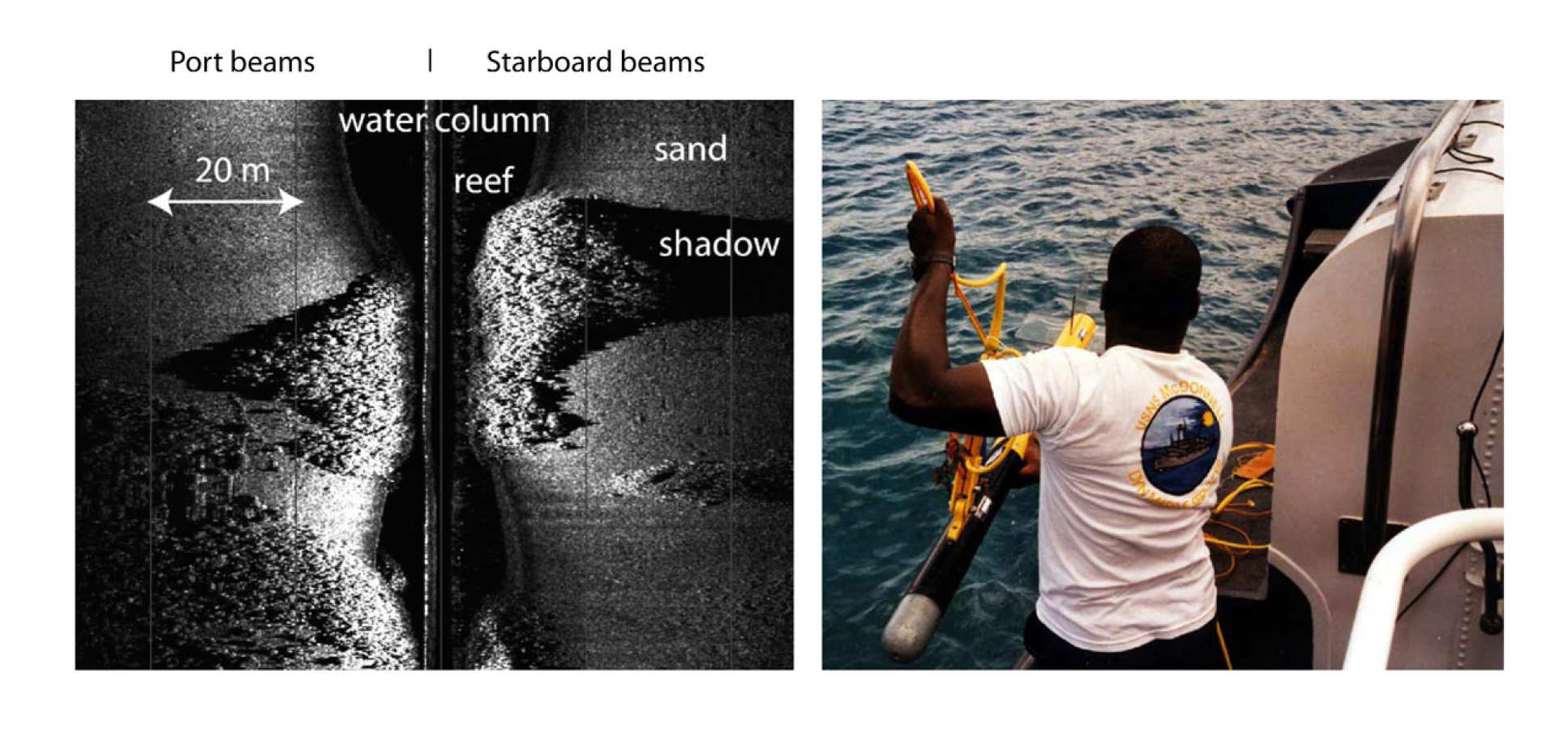Quantifying environmental degregation following coral bleaching (Seychelles)
A project conducted under the Royal Geographical Society´s Shoals of Capricorn Program

We conducted high-resolution (675 kHz) side-scan sonar surveys six and thirty months after a major coral bleaching event in the Seychelles. The surveyed areas contain four different reef morphologies, the distribution of which depends on water depth and distance from the shoreline. These four reef types also have different coral densities and colony morphologies (branching or mixed massive/ branching). Textural analysis, based on first order statistics, unsupervised cluster analysis and Mann-Whitney U-tests, showed a correlation between recorded backscatter response and reef type that is attributed to the link between community composition and rugosity on a millimetre to tens of metre scale. Branching coral colonies were found to be relatively good scatterers of acoustic energy, and result in a broad intermediate to high intensity response. Massive coral colonies and reefs with a hard carbonate pavement were found to be principally reflectors of the acoustic energy, resulting in a narrow low intensity response. Comparison of the two surveys separated in time by two years, showed seabed texture to change most significantly over the reef areas that contained the highest coral abundances and mortality rates. In particular, the disintegration of dense branching colonies that suffered almost 100% mortality during the bleaching event resulted in a characteristic loss of intermediate to high backscatter intensity. The work demonstrates the contribution that side-scan sonar could make in the assessment of loss of rugosity following a bleaching episode, which has important implications to both the recovery of the reef itself and the abundance and distribution of associated reef organisms.
Publications
Collier, J. S. and S. R. Humber (2007). "Time-lapse side-scan sonar imaging of bleached coral reefs: A case study from the Seychelles". Remote Sensing of Environment 108: 339-356. PDF
Collier, J.S. and S.R. Humber (2011). " Fringing reefs of the Seychelles inner granitic islands, Western Indian Ocean". In GeoHab Atlas: Seafloor Geomorphology as Benthic Habitat, Harris P. and Baker E. ed. (Elsevier), pp.339-347 DOI: 10.1016/B978-0-12-385140-6.00021-9
PhD Theses
Humber S.R., 2004. High resolution side-scan sonar imaging of coral reefs in the Seychelles, Imperial College London.
People
- Jenny Collier
- Stuart Humber (PhD student, Graduated)